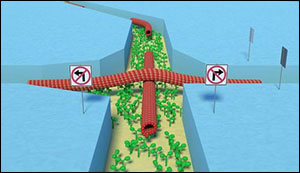Using nanotechnology to create parallel computers
30. 3. 2016 | Lund University | www.lunduniversity.lu.se
Researchers at Lund University in Sweden have utilised nanotechnology to create a biological computer that can solve certain mathematical problems far faster and more energy-efficiently than conventional electrical computers.
Conventional computers have contributed to major advances for society over the past few decades, but have a weakness: they can only do one thing at a time. The more arithmetic operations a problem requires, the longer it takes to perform the calculations. This means that electronic computers are not efficient in dealing with combinatorial problems, for example in cryptography and mathematical optimisation, which require the computer to test a large number of different solutions.

However, nanotechnology researchers at Lund are on the track of a solution. They have shown that a parallel computer utilising molecular motors can find all the correct solutions to a combinatorial problem, rapidly and energy-efficiently. Parallel computers perform several calculations simultaneously, instead of sequentially, which in theory makes them extremely fast at solving combinatorial problems. Up to now the limiting factors for parallel computers have been scalability and practical implementation.
Biological computers use a strategy similar to that of so-called quantum computers. Quantum mechanics uses qubits – ones and zeroes – whereas biocomputers use molecules that work in parallel.
Read more at Lund University
Image Credit: Lund University
-jk-




